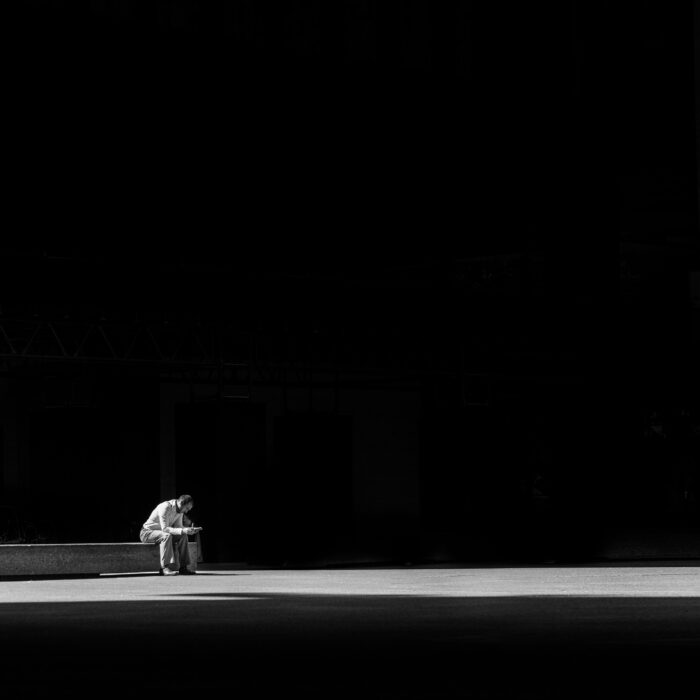You have no items in your cart. Want to get some nice things?
Go shopping Call Me by Your Name, the latest feature by Luca Guadagnino (I Am Love, Bigger Splash) is the third instalment of his desire trilogy, adapted from the novel by André Aciman. It traces the sexual awakening of a teenager, Elio (Timothée Chalamet), sparked by the arrival of an uber-confident young American professor, Oliver (Armie Hammer), who spends the summer with Elio and his family ‘somewhere in Northern Italy’. The ‘subjective camera’ follows Elio’s every thought, from his initial judgement of Oliver as a ‘rude’ American who flits in and out of scenes with the catchphrase ‘later’, to his palpable yearning as they spend time in close proximity, cycling through the hot countryside to a nearby village. Living side by side with only a door separating them is both paradise and pure torment for Elio. Guadagnino conveys the teenager’s discovery of his own sexuality with both solemnity and humour. From low-angle shots that echo Elio’s admiration for Oliver, to the focus on his expression of angst and longing, Call Me by Your Name ensures Elio’s subjectivity is sustained throughout.
Call Me by Your Name, the latest feature by Luca Guadagnino (I Am Love, Bigger Splash) is the third instalment of his desire trilogy, adapted from the novel by André Aciman. It traces the sexual awakening of a teenager, Elio (Timothée Chalamet), sparked by the arrival of an uber-confident young American professor, Oliver (Armie Hammer), who spends the summer with Elio and his family ‘somewhere in Northern Italy’. The ‘subjective camera’ follows Elio’s every thought, from his initial judgement of Oliver as a ‘rude’ American who flits in and out of scenes with the catchphrase ‘later’, to his palpable yearning as they spend time in close proximity, cycling through the hot countryside to a nearby village. Living side by side with only a door separating them is both paradise and pure torment for Elio. Guadagnino conveys the teenager’s discovery of his own sexuality with both solemnity and humour. From low-angle shots that echo Elio’s admiration for Oliver, to the focus on his expression of angst and longing, Call Me by Your Name ensures Elio’s subjectivity is sustained throughout.
This might be the point to mention another Queer film, La Vie D’Adèle (Blue Is the Warmest Colour, 2013) by French-Tunisian director, Abdellatif Kechiche, starring Adèle Exarchopoulos as 15-year-old Adèle, and Lea Seydoux as the slightly older, peroxide blue-haired artist, Emma. Both films are coming-of-age stories that build a close affinity between the viewer and a teenage protagonist, pulling us into a world of subjective experience.
Blue Is the Warmest Colour gradually cements the triangular relationship between the camera, Adèle and the audience, helping to legitimise the seven-minute explicit sex scene. In this way, the director can be as graphic as he wishes. A passionate love scene is of a piece with the depiction of Adèle as a girl with insatiable appetites – and the way the camera focuses on her fleshy, slightly open mouth throughout the film anticipates this. The seven minutes of sexual intensity form the centrepiece of the film: wavering moans, close-ups and medium shots of their two naked bodies joining together in ecstatic pleasure. The spectator who intrudes on this private display of love and lust has their eyes glued to the screen. Intentionally or not, the scene titillates. But what about the ethics of a sex scene that verges on soft porn? Did Kechiche overstep the line? Did his subjective camera manipulate the viewer and veil an abuse of power? Julie Maroh, author of the graphic novel on which the film is based, seems to think so. She concludes that the scene was “a brutal and surgical display, exuberant and cold, of so-called lesbian sex, which turned into porn, and made me feel very ill at ease.” The comments on YouTube below the uploaded ‘clean version’ of the scene are enough to support the author’s view that the scene has the effect of titillation. Yet Kechiche cannot be wholly demonised. The camera rests on Adèle’s face as she is moved to tears after they have made love, and there is peace and beauty in the final shot of their bodies entwined. Close-ups of Adèle’s face are another way the director ensures he does not stray too far from subjectivity. Yet, despite these attempts, the scene does not free itself from Laura Mulvey’s landmark thesis on Visual Pleasure[1]. Indeed, the film features on the website, Thought Catalog in a post called ‘12 Movies That Are Better Than Porn’[2].
Perhaps a titillating effect cannot be avoided in a sex scene, for it naturally stirs the audience’s senses. This calls into question the function of art, and whether we can justify visual pleasure. If the spectator of Blue Is the Warmest Colour is drawn into Adèle’s world of sensuality, is this not the director’s achievement of subjectivity? The audience replicates some of how the character feels, but is this moral? Especially when the morals of the actresses are compromised. Léa Seydoux described the director’s painstaking method of shooting – hundreds of takes; 10 hours on the sex scene alone – as “kind of humiliating sometimes, I was feeling like a prostitute”. In light of the recent sexual harassment scandals in the film and theatre industry, the effect of the scene on Seydoux is even more of a sensitive topic.
The director of Call Me by Your Name takes a starkly different approach. At the moment when Elio and Oliver consummate their desires, Guadagnino focuses on Elio’s initial shyness, and the camera moves to their feet as they sit on the end of the bed. Elio places his feet on Oliver’s, and the camera-eye consciously moves away to the open window. The decision not to include a sex scene renders the movie family-friendly and as accessible as possible. No room for debate there. The director creates a sense of perfection through the honesty of Elio and Oliver, and the sincerity of their relationship. The Guardian described it as ‘imbued with sophisticated sensuality’.[3] Sophisticated in the sense that it refrains from graphic sex scenes, using subtlety instead: the exchange of looks and gestures as symbols of desire.
The question of how filmmakers tackle the challenge of sex on screen arises when trying to convey heightened emotion as opposed to merely displaying carnal pleasure. How can directors negotiate a new language of sex on screen without completely omitting the sex, and without the moral dilemma of visual pleasure?
In Blue Is the Warmest Colour the camera takes care to pause on the subjective pleasure on the women’s faces, raising the film above mere exploitation. Yet there is no escaping the fact that the lengthy love scene shifts from representing Adèle’s pleasure to that of the audience’s. We are given full view of the actresses, a view that the characters would not have experienced themselves. What’s more, during the throes of passion, the characters would almost be blind to the corporeal, therefore the shots of the two making love are clearly for the audience’s pleasure alone. It is easy to evoke pleasure, but the challenges of depicting it remain. A language of desire is achieved with conviction in Blue Is the Warmest Colour and Call Me by Your Name, but a language of love-making, it seems, is yet to emerge. It is time for a new kind of representation of sex on screen, one that can’t double as porn, but rather, a representation that gets inside the heads of the protagonists without solely relying on the body to depict heightened emotional states.
[1] Laura Mulvey, ‘Visual Pleasure and Narrative Cinema Screen’ 16, no. 3 (1975): 6-18.
[2] Other excerpts in the post include the oral sex scene in Blue Valentine, the spanking scene in Secretary and the Tent scene in Brokeback Mountain.
[3] Peter Bradshaw, the Guardian, 26.11.17 https://www.theguardian.com/film/2017/oct/26/call-me-by-your-name-review-luca-guadagnino-armie-hammer
About Olivia Neilson
Olivia has an MA in Film from King's College London. She works in Arts PR and is a freelance writer.



